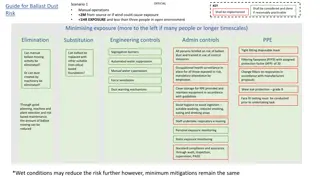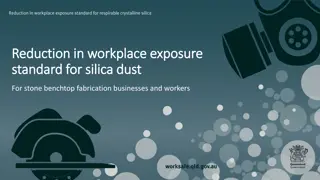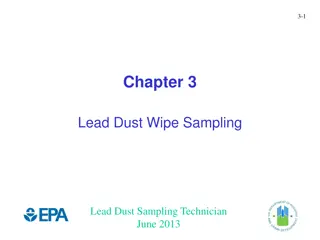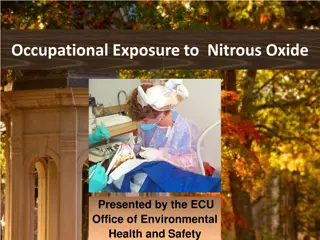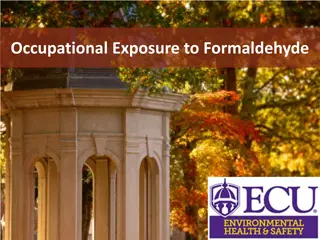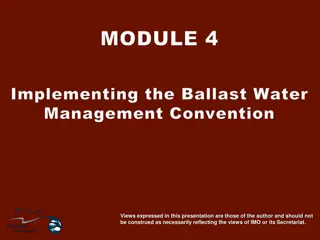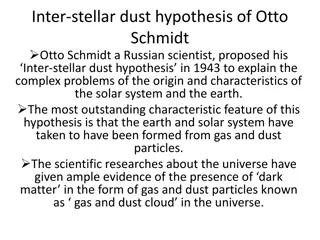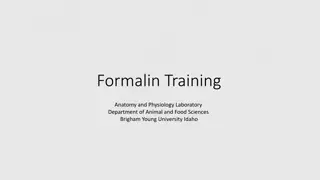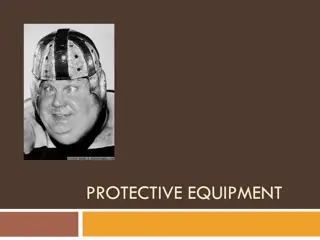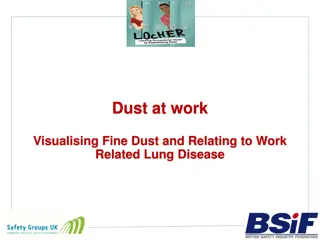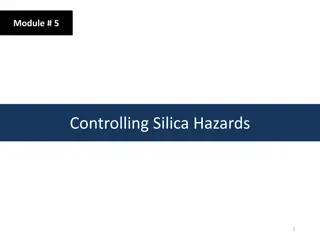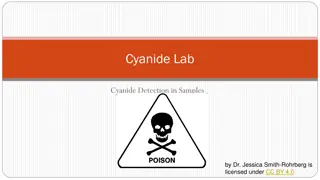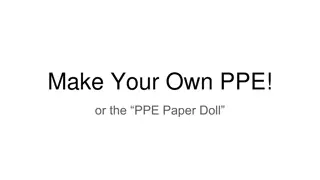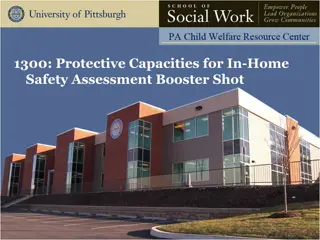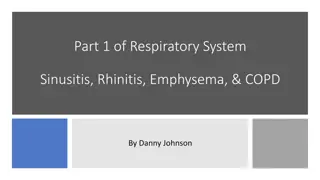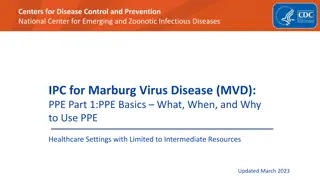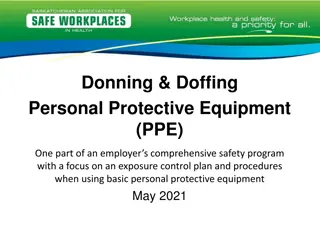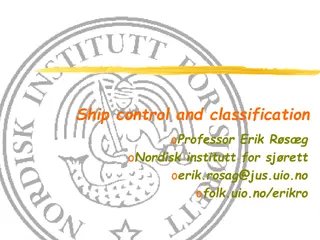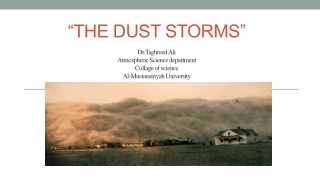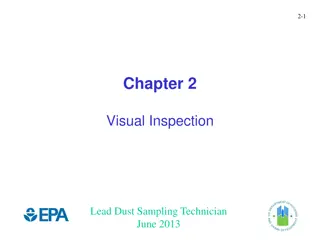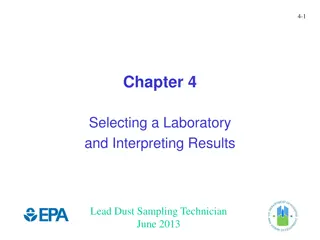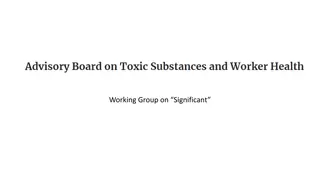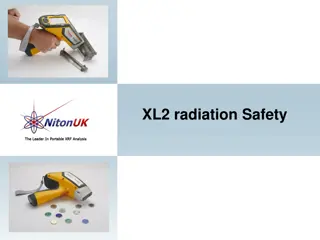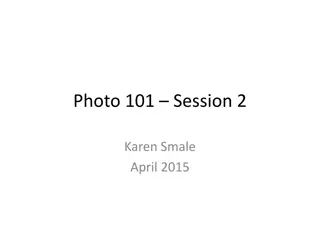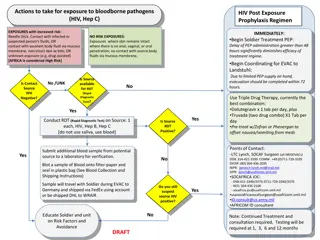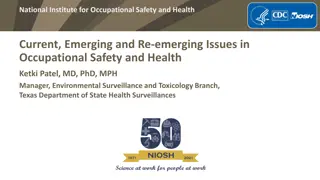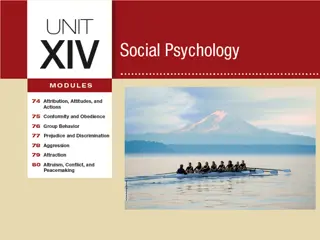Respiratory Protective Equipment (RPE) Guidelines for Ballast Dust Exposure on Worksites
This toolbox talk provides guidelines on minimizing exposure to ballast dust on worksites through the proper use of Respiratory Protective Equipment (RPE). It emphasizes the importance of keeping dust exposure low and identifies roles requiring additional protection. Instructions on fitting disposable masks, checking for proper fit, and addressing issues with facial hair are detailed to ensure maximum protection against dust inhalation.
Download Presentation

Please find below an Image/Link to download the presentation.
The content on the website is provided AS IS for your information and personal use only. It may not be sold, licensed, or shared on other websites without obtaining consent from the author. Download presentation by click this link. If you encounter any issues during the download, it is possible that the publisher has removed the file from their server.
E N D
Presentation Transcript
BDWG toolbox talks LA01 Ballast Dust on Worksites Use of Respiratory Protective Equipment (RPE) 13-Sep-24 / 1
BDWG toolbox talks LA01 Key considerations Keep exposure to ballast dust as low as reasonably practicable Roles that require further protection from ballast dust will be identified Where the expected levels of exposure to dust for staff on worksites is <50% Workplace Exposure Limit, a tight fitting dust mask with an assigned protection factor of 20 (e.g. FFP3) can be used. Face fit testing must be provide to individuals required to wear a tight fitting facepiece 13-Sep-24 / 2
BDWG toolbox talks LA01 Disposable masks A nose clip is located in the top panel. Gently bend it at the centre. Hold the mask in your hand and pull out the bottom panel to form a cup. Turn mask over so you can grasp the elastic straps Cup the mask under your chin. Ensure the two straps are separated and pull the straps over your head 13-Sep-24 / 3
BDWG toolbox talks LA01 Disposable masks contd Locate the lower strap below the ears and the upper strap across the crown of your head. Adjust top and bottom panels of the mask for a comfortable fit. Using both hands, mould the nose clip to the shape of the lower part of your nose. DO NOT pinch the nosepiece using only one hand as this may result in a less effective seal. 13-Sep-24 / 4
BDWG toolbox talks LA01 Check it fits MASKS WITH VALVES Cover the front of the respirator with both hands, being careful not to disturb its position on your face. Breathe IN sharply. A Negative pressure (like it is sticking to your face) should be felt inside the mask. If air leaks around the nose, readjust the nose clip. If air leaks at the sides adjust the straps back along the sides of your head. Repeat this until the mask fits properly MASKS WITHOUT VALVES Cover the front of the respirator with both hands, being careful not to disturb its position on your face. Breathe OUT sharply. A Positive pressure (like blowing up a balloon) should be felt inside the mask. If not, adjust as above. 13-Sep-24 / 5
BDWG toolbox talks LA01 Beards and facial hair Facial hair will reduce the protection provided by a tight fitting facepiece. Where appropriate, individuals should shave within 8hrs of the start of a shift. If you can t achieve an effective seal, you must not enter the area where dust is present. Report it as a Close Call. Remember: Only YOU can really tell if your mask fits Sort it Report it! Please report very dusty events to NSC 24/7 on T: 01908 723500 13-Sep-24 / 6
BDWG toolbox talks LA01 What have you learnt? Question: How will you know if you are required to wear Respirable Protective Equipment to undertake your work? Question: What should you do to get the dust mask to fit properly? Question: What should I do if I can t get the RPE to fit properly? 13-Sep-24 / 7


